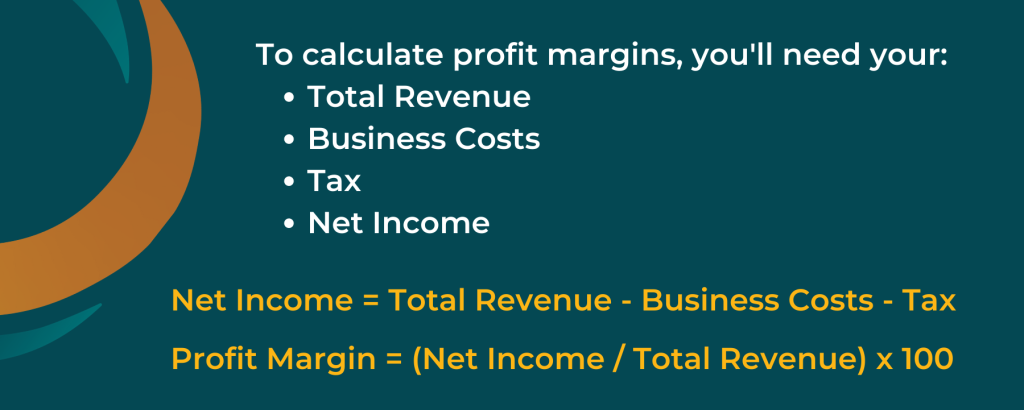Handling profit margins for your HVAC business can be tricky. Most HVAC business owners decided to embark on the journey of being an entrepreneur both for two reasons: freedom and financial independence.
Could there be some things that are holding you back when it comes to running your HVAC business and maximizing your profits?
You can see your HVAC business is growing. You’re hiring more people, you’re getting more customers, you’re spending more money on tools but one thing’s missing: profit.
Spending too much on manual processes can be a big reason you’re not making the big bucks yet.
The guide below will walk you through some of the challenges of automating an HVAC business. Let’s dive in:

What Are the Standard Profit Margins for the HVAC Industry?
Firstly, HVAC profit margins can vary a lot, based on a few things:
- Location – interestingly enough, sometimes HVAC companies based in rural areas can earn a lot more due to lower costs of running the business
- Specialty – some HVAC companies try to offer a wide range of services, whilst others focus on specific areas like residential, commercial, installation, maintenance, etc.
- Target customers – it might be more difficult to acquire high value customers, especially in the commercial space, but offering a premium experience can seriously influence your profit range
Statistically, however, the industry standard in the United States is between $50 000 and several millions. In percentages, experts say it can vary between 8% and 40%.
The Department of Energy suggests a 12% HVAC profit margins for successful businesses as the industry standard.
How To Calculate Your HVAC Business Profit Margin
Here are five steps to help you calculate your profit margin:
1. Add Up All Your Costs
A simple way to calculate your profit margin and see if it matches the industry standard (or exceeds it!) is to add up all your costs – and we do mean ALL your costs, down to the last paperclip. Some common ones are:
- Rent expenses (office, warehouse, vehicle parking, etc.)
- Cost of goods (office supplies)
- Running the business costs: marketing, accounting, lawyers, etc.
- Vehicle costs (fuel, checkups, insurance, etc.)
- Inventory and tools or equipment costs
- Employee salaries, benefits, and insurance costs
2. Calculate Your Total Revenue
Then calculate your company’s total revenue – ideally, per year but you can also do this per month although we recommend trying to get an average total revenue number, rather than taking a high or a low month.
3. Calculate Your Net Income
From your total revenue, you should deduct the business costs and then deduct the taxes you owe.
It should look something like this: Net Income = Total Revenue – Business Expenses – Tax
4. Obtain Your Net Profit Margin
To calculate your HVAC business profit margins, you need to divide the net income by the total revenue and multiply the result by 100 to obtain a percentage.
For example, it could look something like this:
- Total revenue = $200,000
- Total costs = $150,000
- Taxes = $10,000
- Net income = $40,000.
Net income ($40,000) / Total revenue ($200,000) = 0.2

Your HVAC business profit margin is: 0.2 x 100 = 20% which falls in the middle of the industry standard, meaning you’re doing quite well for yourself.
However, don’t take this as the limit. If you are in a situation where you feel like you can comfortably raise prices (to increase total revenue) or decrease costs by making processes more efficient and set metrics for business growth, then don’t let a number stop you. As a business owner, you are in control of your profit.
One main reason so many businesses fail every year, according to ACHR News, is because they don’t take the time to do these basic calculations (or they get the wrong result because they don’t have an accurate view of their costs).
If your profit margin comes out negative, you’re basically spending money to work. How can that happen? We’ll detail a few reasons why you might not be breaking even below.
Why Are You Earning Less Than the Industry Standard?
1. Focusing on the Wrong HVAC Business Metrics
Let’s start with a slightly different question:
What makes your business better than the field service competition? If you answered with things like:
- Number of technicians
- Years of experience
- New tools
- Quality workmanship
Then you’ve got one reason right there for your bottom line being less than the industry standard profit margin.
Your answers are perfectly logical and do contribute to what makes you stand out from the crowd, but they’re not the most important thing and they shouldn’t be your only goal.
Solution: Improving the Customer Journey
So, the right question to ask yourself when you see your HVAC business profit margins slipping, is how does the customer experience you offer differ from what your competitors can do? How does it outperform theirs?
- A premium customer journey is what allows you to set prices that will make your business thrive, not simply survive.
- Understanding your potential customers and anticipating their needs is a lot more valuable than simply fixing their issue.
More often than not, customers won’t be able to tell apart an excellent HVAC install from an average one, but they’ll definitely remember the company that sent them service reminders exactly when their filters were getting grimy.
2. Underestimating Your Own Business Costs and Overestimating HVAC Profit Margins
Since we’re on the topic of prices: most business owners, regardless of experience, engage in a fight to the bottom when it comes to what they should charge for their HVAC services.
This stems from not having an accurate overview of their overheads and what these include (it’s not just labor costs and spare parts) and from the fact that they’re not aware of which parts of the business are bleeding money.
Not all jobs are the same. You might be doing more service work than replacement or specialize in industrial fittings with the occasional residential work but it’s rare that all types of jobs bring in the same amount of profit.
Your customers should also inform your decisions when it comes to ordering stock, hiring, marketing, and other business-related activities.
There’s no point in setting prices to match the competitor’s; you don’t know the price of their materials or what they pay their techs, just like you don’t know how much they’re winning or losing.
Solution: Compartmentalizing your business
This will help you calculate exactly how much each type of service costs you, then decide how much your profit should be (the industry standard profit margin for HVAC is approx. 10%).
Add that to obtain the final price, you’ll always end up in the green and the customers that will pay for your service are the ones worth keeping around.
Listen to Ruth King, HVAC expert, explain this in more depth below.
She explains how growing your revenue is highly dependent on who your customers are, who your customers could be, and how accurate your financial statements are.
3. Inefficient Use of Resources
Imagine an HVAC technician goes to a repair job, diagnoses the issues, then realizes they don’t have the spare part they need in the truck.
They call the operations office where someone checks a spreadsheet (or worse, a paper list) and lets them know that they don’t have it in the warehouse either but that they’ll place a purchase order and have it in 2-3 business days.
Sometimes it’s overstock (which takes up pricey storage space) or understock (which annoys customers to no end) or even damaged stock that rattles around in a truck for weeks.
The end result of this scenario is familiar to any owner or manager and one of the reasons they’re not making anything close to the standard profit margin for HVAC specialists like them.
It’s the same situation with jobs that are scheduled whenever there’s an available tech instead of using a digital tool to judge which route is more efficient when it comes to fuel consumption and time spent on the road (since that time is a billable resource).
Solution: Inventory management software is the natural solution!
But even then you need to make sure it’s set up properly. Using a digital system can boost profitability and improves productivity, so your team will never misplace another part and you’ll always be able to get an overview of your inventory.
4. Hiring More Admin Instead of More HVAC Contractors
And the truth of the matter is that you don’t even have a choice about it. You might be thinking it’s a sign of high demand and a growing business that you need to keep hiring admin and office staff, but if office staff are outnumbering your techs, that’s not growth.

Your technicians are the ones who put tangible money in the bank. Your sales team, too.
Office staff are vital, of course: they make sure the technicians have their schedules full, customers are happy and kept up-to-date, and the business is fully stocked when it comes to parts and tools.
This is a valuable service but if you want to make anything close to the industry standard profit margin for HVAC, you’ll want to have a ratio of 1 admin for every 5 techs – if the admin is fairly new to the job.
As they get more experienced, 1:7 would be a recipe for success. But the only way to do this is with the help of digital tools and a solid customer database, connected to a service dispatch software.
Solution: Hiring with soft skills in mind
At the end of the day, no HVAC installation will ever be good enough to make up for a rude technician, as well as poor customer service on the phone. That’s why you should always know what to consider before you hire HVAC technicans.
5. Inefficient Business Processes
A lot of HVAC business owners and managers have either worked their way up from technicians or started their business after being in the field. This means they know the industry in and out, they know how to manage other techs, and are experienced in dealing with customers.
No one would blame them for having little patience to sit down every quarter and audit the business from top to bottom for their average HVAC profit margin, starting with every sheet of paper bought and paid for with company funds and down to every truck.
Then list every customer, the type of service provided, the cost, the profit, the time it took to get it done, and so on and so forth. Every 3 months.
This is what running your own HVAC business means. There’s rarely a lot of time left for anything else and it’s simply part of the entrepreneurial journey. You don’t need an MBA to know that if you can’t measure it, you can’t manage it.
Solution: Understand your numbers first!
This will help you streamline the way in which your employees record them in the first place. Then sit down (either on your own or with a business consultant) and start writing out potential improvements.
For example, if you looked at your customer database and separated your new customers from your returning customers in the last quarter and realized that the latter makes up only 5% of your business, you’d deduce that you need to improve your customer retention rate.
Knowing your numbers becomes much more straightforward when you use a specialized reporting software with an easy to comprehend dashboard.
6. Unstable HVAC Business Cashflow
If you have to keep the jobs coming constantly and work overtime just to make sure you can pay your own bills, then you don’t have a healthy cash flow and your HVAC business profit margins may not be below where you’d like them.
This can be due to any number of things, from the aforementioned misunderstanding of overheads and profit numbers, to inventory management errors, to the very way you’re invoicing.

Late invoices mean late payments! Sadly, there are plenty of customers who like to pretend that they’ve “forgotten” about paying, much like you did about requesting payment.
If this is a common problem your business is running into, you can solve that problem with…
Solution: Invoicing software that automates the payment process.
However, sometimes errors happen and payments get delayed (or completely neglected) for other reasons. Not to mention mistakes on invoices can occur because the tech didn’t write down the parts they used.
We haven’t even started on the customers who simply refuse to pay for whatever reason. These are all taking a bite out of your profit margins!
The best way to minimize the chance of that happening is to adopt software that sends automatic payment reminders and has a customer self-service portal that lets customers pay 24/7. c
How To Take Your HVAC Profit Margins To the Next Level
All in all, identifying the problem is only half of the job, but if you know why you’re not making the industry-standard profit margin for HVAC companies, you can get started on fixing the underlying issues.
Setting the right price is the first step towards a thriving business, instead of a struggling one. From there, you can learn to sell more confidently, too.
But automating a business with an HVAC software, like Commusoft, will help you increase profit margins and take home more at the end of the day! Learn more by clicking the banner below.

Cristina Maria
I'm here to bring you next-level strategies to the field service industry. When I'm not working on the best tips to grow your business, I'm on the lookout for sci-fi novels and cookie recipes.









